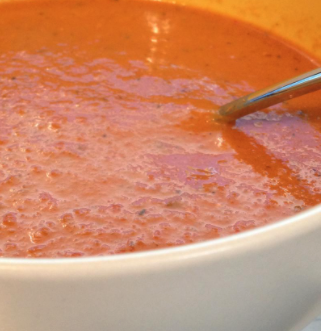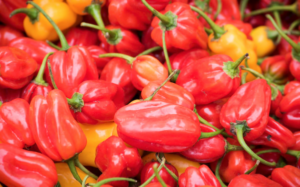Eating In Color: Red, Part Two
The Eating in Color series continues with a closer look at red vegetables. Yesterday we looked at strawberries, and now it's time to shine a spotlight on red bell peppers!As we mentioned on Wednesday, red fruits and vegetables are great sources of vitamin C, folate, and potassium, along with phytonutrients like lycopene and other carotenoids. Red bell peppers are no exception. In fact, according to Characterisation of antioxidant compounds in sweet bell pepper (Capsicum annuum L.) under organic and conventional growing systems, "Sweet red bell pepper is one of the best sources of ascorbic acid and carotenoids as well as phenolic compounds important in the human diet." So how can your clients choose the best bell pepper for cooking? Look for red bell peppers with firm flesh, smooth skin, and no soft spots or cuts. When they get their bell peppers home, they can store them in a sealed container in the refrigerator for longest shelf life. Just before they use their peppers, they should wash them thoroughly under cold, running water and dry them completely.Generally people remove the stem and seeds before eating or cooking with a bell pepper. It's also a good idea to remove all of the white membrane inside the pepper before slicing it into strips to go in a tasty dip or dicing it for a chili or stew.
So how can your clients choose the best bell pepper for cooking? Look for red bell peppers with firm flesh, smooth skin, and no soft spots or cuts. When they get their bell peppers home, they can store them in a sealed container in the refrigerator for longest shelf life. Just before they use their peppers, they should wash them thoroughly under cold, running water and dry them completely.Generally people remove the stem and seeds before eating or cooking with a bell pepper. It's also a good idea to remove all of the white membrane inside the pepper before slicing it into strips to go in a tasty dip or dicing it for a chili or stew. Here are a few of my favorite ways to cook with red bell peppers.
Here are a few of my favorite ways to cook with red bell peppers.
- Green Beans with Red Peppers
- Red Pepper Soup
- Chicken Pepper Stir-Fry
- Pepper-Steamed Kale
- Cajun Stuffed Peppers (replace green peppers with red)
There are lots of other bell pepper recipes in the recipe archive!And if peppers aren't popular with your clients, here are a few more red vegetables to try...
- Tomatoes
- Beets
- Radishes
- Red Onion
- Radicchio





